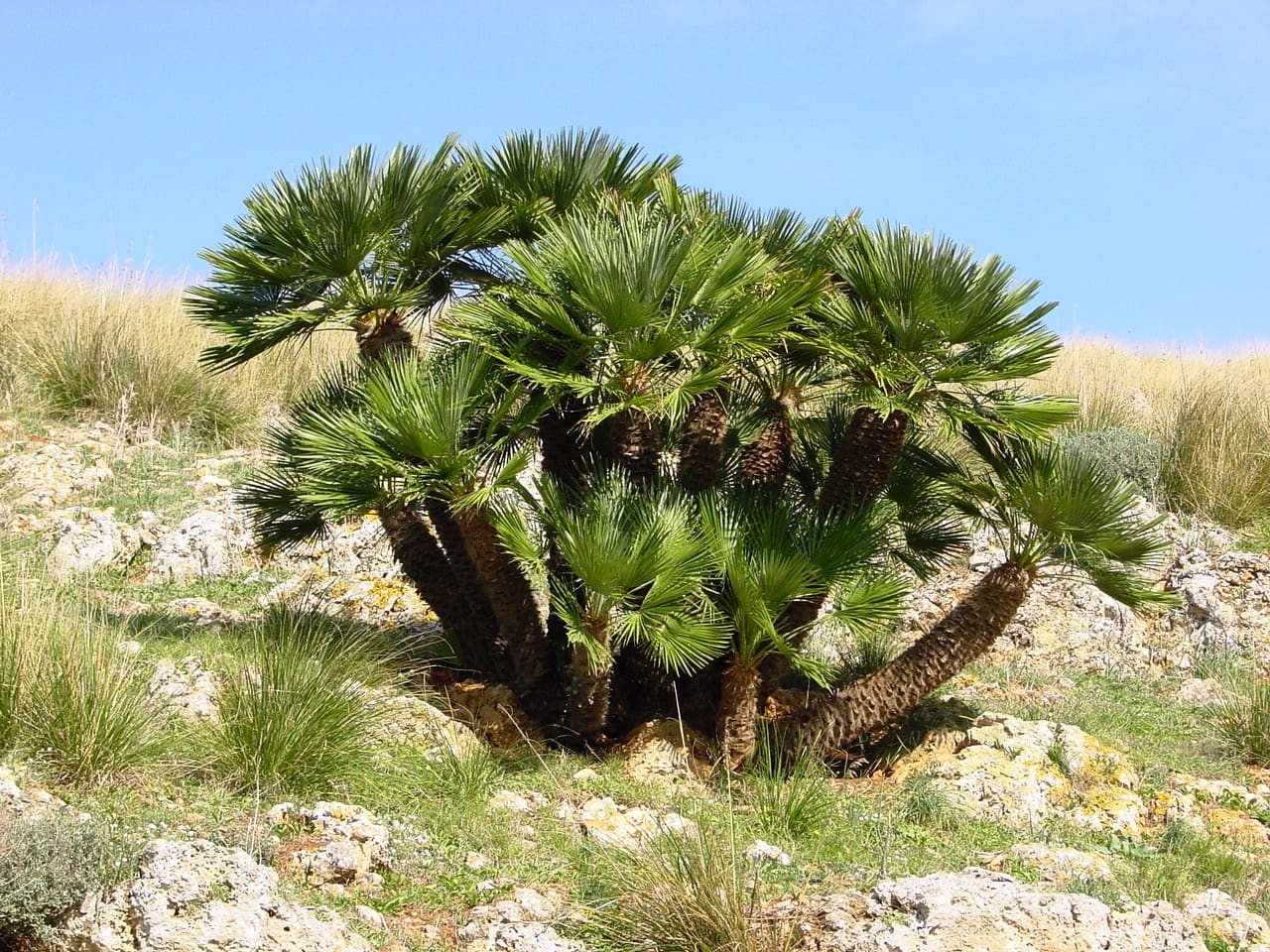KelpMax has proven itself in many ways, with many types of crops – foods, fruit, turf, ornamentals, etc. – the most significant of which is its auxin activity, which stimulates the growth of plant roots, which in turn stimulates shoot growth. The product contains a variety of other plant growth regulators, as well – not found in other products – that can stimulate the branching of plants that have rhizomes.
In orchids, I have personally observed seen the relationship between KelpMax and branching in paphiopedilums, where a single growth became eight in the course of a year, and in cattleyas, having has a plant with a single growth front branch to four in about nine months.
In this article, I am documenting an experiment intended to demonstrate the connection between KelpMax and branching in dwarf Mediterranean fan palms, Chamaerops humilis.
Chamaerops humilis is a hardy palm tree that originates in northern Africa, and left “unpruned” (i.e., the “pups” that grow from its base left in place), tends to form multi-growth specimens. The individual leaf segments are pleated and able to expand and collapse in response to water availability; reducing the exposed surface area when conservation is necessary.

On January 10, 2019 I acquired ten (10) seedlings, overgrown in two-inch pots. They were moved into six-inch pots, using Miracle-Gro Cactus, Palm, and Citrus Soil. The ten plants were divided into two, five-plant populations, attempting to make them as equivalent as possible. The soil contains a small supply of nutrients, so the plants were watered-in using plain water containing one tablespoon of KelpMax per gallon (1:256), to stimulate initial root growth and accelerating them getting established in their new pots. The plants are grown outdoors, so are subject to whatever nature brings in the way of sun, warmth, and rain.
The following photo shows the plants immediately after being fed for the first time, on February 2, 2019, using the procedure below.

To two gallons of water, I added K-Lite fertilizer (12-1-1-10Ca-3Mg) at 1 teaspoon/gallon (170 ppm N), and Concentric Ag Garden Solution at 1.25 ounces per gallon (1:100). The”control” group of five pots to the right were filled to the top and allowed to drain, then that was repeated several times until one gallon was used, ensuring saturation of the medium. After that, one ounce (1:128) of KelpMax was added to the remaining gallon of solution and applied in a similar manner to the test plants, shown on the left.
On February 14, the plants were moved to a sunnier location, and manually watered; the control plants on the right with plain water; the test group on the left with plain water to which KelpMax was added at a 1:128.
February 28 the plants were fed and watered again. All ten received K-Lite at 1 teaspoon/gallon, with the test plants also receiving KelpMax at 1:128.
At this point, March 3, about one month into the experiment, individuals unfamiliar with it noted some subtle differences between the two populations:
- When the soil is relatively dry, those plants receiving the KelpMax supplement appear to have “broader” leaves, and
- The bases of the test plants, sitting at the soil surface, appear more swollen.
Both, in my assessment, can be attributed simply to more root growth in the test population. KelpMax is primarily a root-growth stimulant, so it seems logical that a more-extensive root system would protect the plants from the stress of reduced watering, so “collapsing” the leaves to reduce transpiration losses is unnecessary. As to the “base swelling”, that might simply be a case of more roots having emerged from the plants’ bases.
March 15, one tablespoon of a granular 16-4-8 “shrub and turf” fertilizer containing iron and micronutrients was placed in each pot to simplify feeding. Plants were watered with plain water, with the test plants also receiving 1:128 KelpMax.